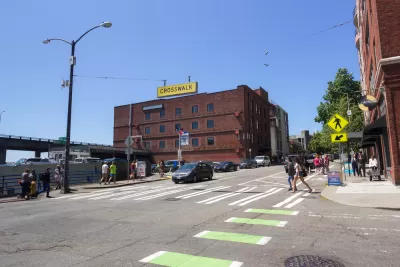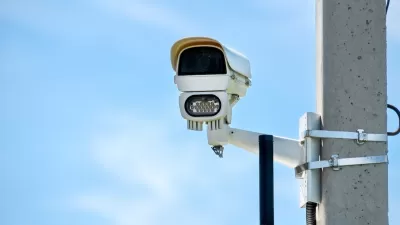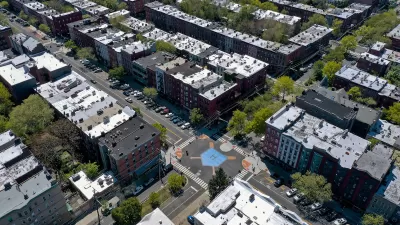Legislative efforts to reduce traffic deaths could move the needle toward Vision Zero, but state leaders failed to commit infrastructure funds to making structural improvements.

A legislative push to improve traffic safety in Washington state is focusing on enforcement and education, largely ignoring the impacts of road design and infrastructure on traffic deaths, writes Gregory Quetin in The Urbanist.
At a press conference held by state legislative leaders and Washington Governor Jay Inslee, “Leaders claimed that addressing behavior could turn the tide of road deaths. However, the absence of funding priority and urgency around fundamentally redesigning our streets suggests their effort will come up short.”
Quetin warns that “the emphasis on law enforcement with the attendant risk of unequal treatment based on race and socioeconomics and after a major infrastructure spending bill containing numerous road expansion projects whose underlying goal is car speed and throughput, both key aspects of road design that make them unsafe and undermines spending on safety in the bill.”
The article describes legislation currently proposed at the state level, efforts which would boost law enforcement presence, lower the blood alcohol limit, ban right turns on red, and implement other measures that could improve safety but fall short of redesigning dangerous roads.
Traffic safety advocates have criticized the Texas Department of Transportation (TxDOT) for taking a similar approach, arguing that transportation agencies should do more to eliminate dangerous road conditions that lead to deadly crashes and reduce the chance of death and serious injury when crashes do occur.
FULL STORY: State Road Safety Push Overlooks Design, Dwells on Enforcement

Maui's Vacation Rental Debate Turns Ugly
Verbal attacks, misinformation campaigns and fistfights plague a high-stakes debate to convert thousands of vacation rentals into long-term housing.

Planetizen Federal Action Tracker
A weekly monitor of how Trump’s orders and actions are impacting planners and planning in America.

In Urban Planning, AI Prompting Could be the New Design Thinking
Creativity has long been key to great urban design. What if we see AI as our new creative partner?

King County Supportive Housing Program Offers Hope for Unhoused Residents
The county is taking a ‘Housing First’ approach that prioritizes getting people into housing, then offering wraparound supportive services.

Researchers Use AI to Get Clearer Picture of US Housing
Analysts are using artificial intelligence to supercharge their research by allowing them to comb through data faster. Though these AI tools can be error prone, they save time and housing researchers are optimistic about the future.

Making Shared Micromobility More Inclusive
Cities and shared mobility system operators can do more to include people with disabilities in planning and operations, per a new report.
Urban Design for Planners 1: Software Tools
This six-course series explores essential urban design concepts using open source software and equips planners with the tools they need to participate fully in the urban design process.
Planning for Universal Design
Learn the tools for implementing Universal Design in planning regulations.
Appalachian Highlands Housing Partners
Gallatin County Department of Planning & Community Development
Heyer Gruel & Associates PA
Mpact (founded as Rail~Volution)
City of Camden Redevelopment Agency
City of Astoria
City of Portland
City of Laramie





























